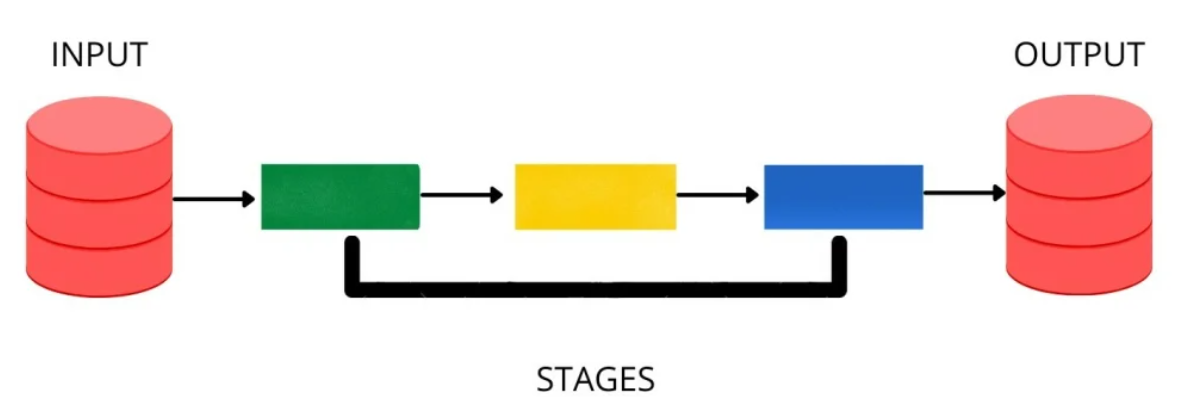
Let’s have a basic overview of MongoDB:
MongoDB is a popular, open-source NoSQL database management system used to store, retrieve, and manage semi-structured data such as documents, images, and videos. It offers high performance, scalability, and flexibility, making it a suitable choice for modern web and mobile applications. MongoDB uses a document-oriented data model and has a simple, easy-to-use API, making it accessible to developers of all skill levels, for more information you can refer to the official website here.
Let’s dive into our hot topic…..Aggregation pipeline:
MongoDB is a popular NoSQL database that stores data in a document-oriented format. While MongoDB provides simple commands for basic read and write operations, it also includes an advanced feature known as the MongoDB Aggregation Pipeline. The aggregation pipeline is a framework that allows for data transformation and aggregation within MongoDB, making it possible to perform complex queries, it is a series of stages that process data and return computed results. It’s essentially a data processing pipeline that transforms data from a raw format to a summarized, aggregated format. The pipeline consists of multiple stages that apply operations to the data, such as filtering, grouping, and transforming. The final result is a single document or a collection of documents that are the result of the operations performed.
What are the advantages of using MongoDB Aggregation Pipeline?
- One of the primary advantages of the MongoDB Aggregation Pipeline is its ability to handle large amounts of data with high performance, with the help of a pipeline, we can break down a complex query into simple stages, in each of which we can execute the different operations on the data, It’s designed to take advantage of MongoDB’s horizontal scaling capabilities, allowing for large datasets to be processed in parallel across multiple servers.
- Another advantage of the MongoDB Aggregation Pipeline is its flexibility. The pipeline allows for custom data processing logic to be defined, making it possible to perform complex data transformations and aggregations
Let’s look at some of the most commonly used pipeline stages
- $match: Filters the data based on specified conditions.
- $group: Groups data based on specified criteria and calculates aggregate values such as sum, average, etc.
- $sort: Sorts the data in ascending or descending order based on specified criteria.
- $project: Transforms the data by including or excluding fields and changing the data structure.
- $limit: Limits the number of documents returned.
Let’s take an example where we have a collection of pizzas having fields such as size, name, toppings, etc.
So here we want to find the total quantity of pizzas whose size is medium and group them according to their name.
db.orders.aggregate( [
// Stage 1: Filter pizza order documents by pizza size
{
$match: { size: "medium" }
},
// Stage 2: Group remaining documents by pizza name and calculate total quantity
{
$group: { _id: "$name", totalQuantity: { $sum: "$quantity" } }
}
] )
Each stage in the pipeline takes the output from the previous stage as input, and the final stage produces the final output of the aggregation. The pipeline operations can be combined in any order to achieve the desired results.
However, there is a steep learning curve for aggregation before being able to use them correctly for more knowledge please refer to the documentation from the official website or you can click here.
Let’s take an example to get a better understanding:
Given below are six collections with the following details country name, capital population, etc.
[json] [ { “name”: “United States”, “capital”: “Washington, D.C.”, “continent”: “North America”, “language”: “English”, “population”: 328239523 }, { “name”: “Ivory Coast”, “capital”: “Abidjan”, “continent”: “Africa”, “language”: “French”, “population”: 26378274 }, { “name”: “France”, “capital”: “Paris”, “continent”: “Europe”, “language”: “French”, “population”: 67081000 }, { “name”: “Australia”, “capital”: “Canberra”, “continent”: “Australia”, “language”: “English”, “population”: 25681300 }, { “name”: “Japan”, “capital”: “Tokyo”, “continent”: “Asia”, “language”: “Japanese”, “population”: 125960000 }, { “name”: “Brazil”, “capital”: “Brasília”, “continent”: “South America”, “language”: “Portuguese”, “population”: 210147125 } ] [/json]Suppose you want to find nations that speak English and only want to display details such as country name, language, and capital, here is how you can do it using the aggregation pipeline.
db.collection.aggregate([
{
$match : { language : "English"}
},
{
$project : { _id : 0, name : 1, capital : 1, language : 1}
}
])
which gives the result:
[ { name: “United States”, capital: “Washington, D.C.”, language: “English”, }, { name: “Australia”, capital: “Canberra”, language: “English”, }, ];Let’s understand what happened :
- In stage 1 $match find the documents with the specified conditions having language “English”, and then send them to the second stage
- In the stage 2 $project suppress the fields that you don’t want to display using “0” and display fields with the value “1” i.e. name, capital, and language.
Conclusion :
In conclusion, the MongoDB Aggregation Pipeline is a powerful and flexible tool that allows for complex data processing and aggregation within MongoDB. Whether you’re working with big data or simply need to perform complex data analysis tasks, the aggregation pipeline is an essential tool to have in your MongoDB toolkit. With its high performance and flexibility, the MongoDB Aggregation Pipeline is the ideal solution for many data processing and analysis problems.
Hope you like it, happy learning…………
